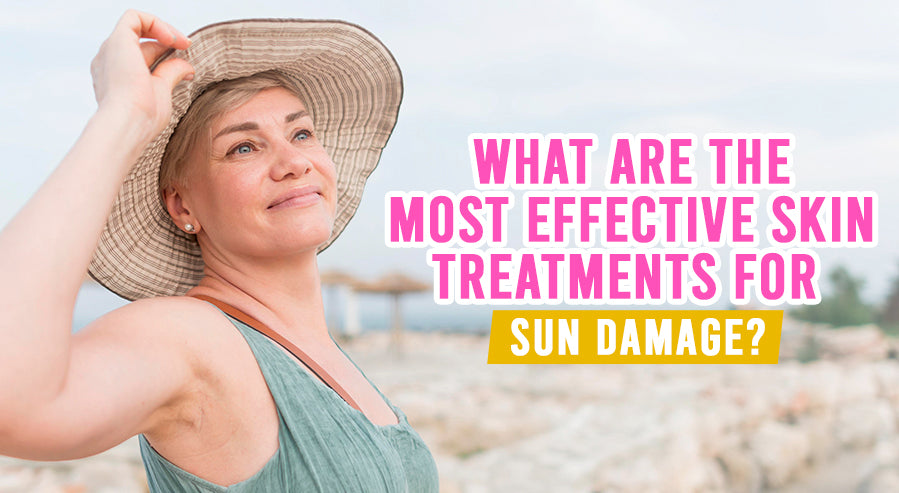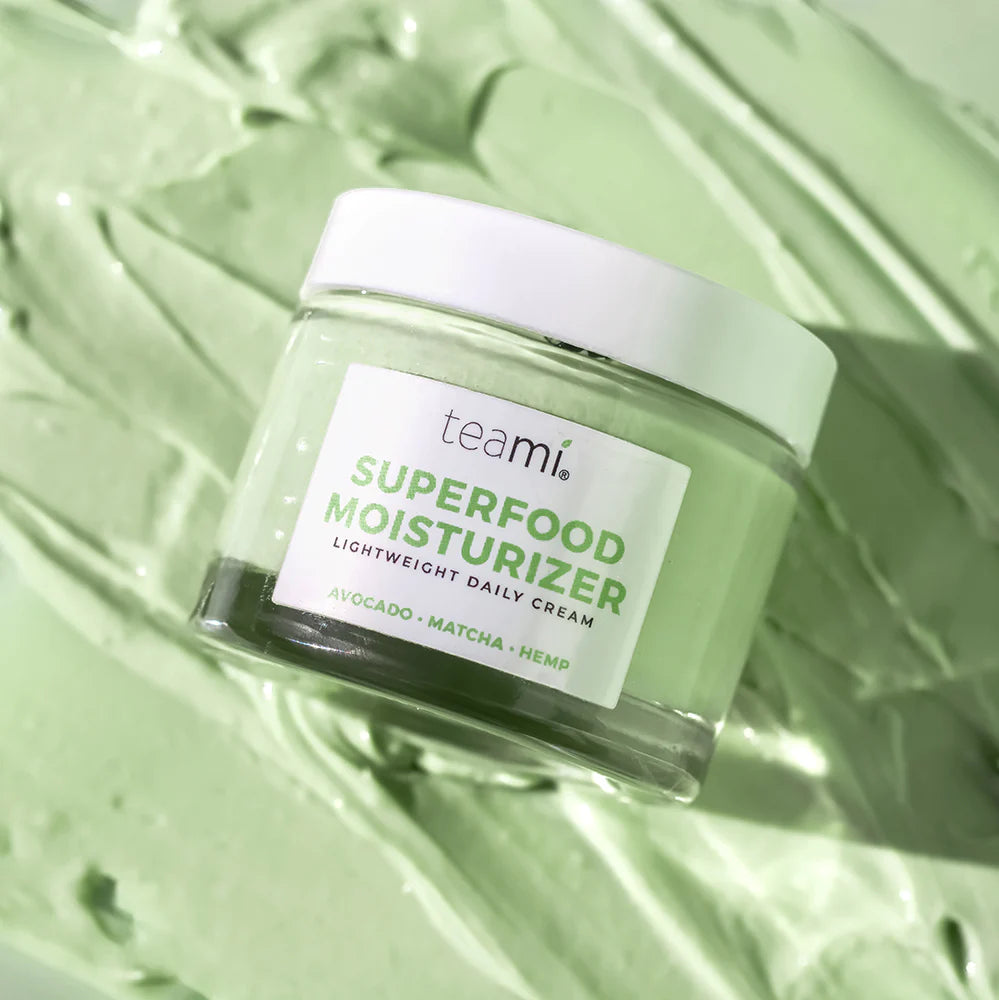What Are the Most Effective Skin Treatments for Sun Damage?

As a species, we rely on the sun to keep us alive since, without it, the planet would be overtaken by an inhospitable cold that would annihilate all life on the planet. Sunlight directly supports life on Earth, primarily plant life that feeds off the ultraviolet rays in a process called photosynthesis.
Humans rely on sunlight for nutrients and vitamins, promoting healthier bodies and functioning organs. Furthermore, sunlight exposure has been tied to increased dopamine levels, with the average person feeling happier when in the sun compared to overcast or rainy weather. As a result, there is a longstanding love for the summer months, where people can freely explore the world with the sun overhead, primarily allowing for trips to the beach.
Unfortunately, the sun's ultraviolet rays harm us when we spend too much time in its light. You would be hard-pressed to find anyone who has not suffered a sunburn from being in the sun too long. Most people assume that is the worst of it and that once the burn fades, there is no other risk to sunshine. Unfortunately, the sun can impact our skin in other ways that are harder to overcome than a simple sunburn.
Even sunburns can lead to more serious health issues since there has been a connection between sunburns and skin cancer for some time. Fortunately, you are more likely to develop cosmetic issues before a major health concern, but that does not mean you cannot take steps to mitigate the effect sunlight has on your complexion.
What is Sun Damage?
You might have heard the phrase "sun damage" concerning skin, though you might not have understood what it entails. Considering how many new terms are created annually, there is no shame in being behind the curve on certain cosmetic terms. Nevertheless, sun damage has become a pressing issue for people who take pride in their complexion. The phrase "sun damage" is a colloquialism that refers to photoaging, which occurs after overexposure to UV light.
Photoaging, as the name implies, is a process by which human skin shows premature signs of aging regardless of the person's age. Our skin will always show signs of aging at some point, but chronological aging means we do not look older than we are. Photoaging can cause a 20-year-old to have skin blemishes that make them look 10 years older.
Photoaging only occurs when the individual spends excessive time exposed to ultraviolet A (UVA) and ultraviolet B (UVB) radiation, both of which are emitted by the sun. There are artificial UVA and UVB radiation sources that can be just as damaging, but you are more likely to experience the problem by spending too much time in the sun.

The radiation strains the skin and physically ages it prematurely by stripping away certain nutrients and compounds that maintain youthful complexions. The biggest issue is that photoaging affects us on a DNA level, meaning the damage caused by sunlight is ultimately irreversible. Photoaging is a permanent consequence of reckless exposure to sunlight, so many people are cautious about spending an extended time in the sun. The effects of photoaging primarily affect the face, neck, and arms, which are some of the most prominent features of the human body.
Fortunately, photoaging requires us to be exposed to UV radiation for hours. This means developing sun-damaged skin is more difficult than it seems, but some demographics have a higher risk due to certain physical characteristics. The groups with the highest risk of photoaging include:
- Individuals with light skin tones.
- Individuals who have had skin cancer or come from a family with a history of skin cancer.
- Individuals with a large number of moles.
- Individuals who have freckles or get sunburns before tanning.
- Individuals who have blue or green eyes.
- Individuals with blond, red, or light brown hair.
- Individuals who live or vacation at high altitudes.
- Individuals who are exposed to intense sunlight on weekends after spending the week indoors.
- Individuals who spend most of their time outdoors or at tanning salons (especially children and teenagers).
If you fall under any of these categories, your chances of getting sun damage are significantly higher than others. While other demographics must still be alert when spending time in UV radiation, individuals in these groups will be less resistant and more likely to develop the associated genetic damage. The symptoms of photoaging cause you to develop wrinkles, spider veins, and even hyperpigmentation that radically alter your complexion to make you look older.
We mentioned before that the damage to your DNA is irreversible, but the physical symptoms that affect your complexion can be addressed. With the right tools, you can restore some youth to your complexion, but finding them can be challenging since most dermatologists direct you to pharmaceuticals that will not be overly effective.
Use Collagen to Repair the Skin
Our skin primarily comprises collagen, a protein we begin generating in the early stages of fetal development. The collagen we produce in the womb creates the skin we are born with, and the collagen leftover is the initial reserve from which our bodies draw to repair it.
We generate more collagen throughout our lives, which is used to revitalize and repair the body parts that need it to function. Insofar as our skin is concerned, collagen is used to repair physical damage to the skin and maintain hydration and elasticity. For the most part, collagen is directly responsible for keeping our skin looking as young as we are.
As we age, our ability to generate more collagen is heavily reduced, and the collagen we still have is broken down much faster. This means that our bodies automatically reprioritize what we use collagen for and tend to ignore cosmetic issues in favor of protecting against physical damage (i.e., scars).
Additionally, some people develop collagen deficiencies earlier in life, meaning they struggle to maintain healthy skin because their bodies physically lack the necessary resources. These deficiencies led to the creation of collagen supplements designed to give people the necessary tools to revitalize their skin despite their lack of protein.

Collagen supplements have been used to reverse premature aging ever since they were created, and they remain one of the most popular tools in the cosmetics industry. However, many collagen users overlook the role collagen plays in our skin when it becomes sun damaged. Photoaging produces several symptoms that collagen supplements are used to counteract, including premature wrinkling. One of the reasons photoaging has this effect, aside from damaging our DNA, is that it strips away the collagen keeping our current dermal layer hydrated.
Collagen supplements can counteract this damage and restore the collagen our skin loses to ultraviolet radiation. Current studies estimate that sun-damaged skin has 20% less collagen than non-sun-damaged skin. This throws off the distribution of collagen to the rest of the skin and contributes to the photoaging symptoms caused by sun damage. A collagen supplement can restore that lost 20% and prevent those symptoms from manifesting.
There are limits to how effective collagen is when dealing with sun-damaged skin, especially since it is not very effective for people with normal collagen levels. Nevertheless, there is evidence that collagen can improve your skin's quality and restore its appearance. Furthermore, collagen supplements can promote collagen production for certain deficiencies, which can help your body resist photoaging.
Use Aloe vera to Reduce Redness
Considering one of the main consequences of sun exposure is sunburn, you have probably already considered using Aloe vera to treat sun damage. Aloe vera is renowned for reducing the pain and irritation caused by sunburns, primarily because it is an anti-inflammatory. Aloe vera can make a major sunburn less unbearable and allows us to get through the burn without struggling as much as we would otherwise.
While it might have risen to prominence because of its ability to treat sunburns, Aloe vera has several additional effects that make it a viable resource against issues like photoaging. Part of what makes Aloe vera so useful for treating sunburns is that it reduces the redness of the skin. While beneficial against sunburns, this effect can be repurposed to address discoloration caused by ultraviolet radiation. Aloe vera has been tested as a tool for treating hyperpigmentation with extremely promising results. Considering hyperpigmentation is one of the more common symptoms of sun damage, Aloe vera's effects against it make it an important addition to your arsenal.
Aloe vera's effects against skin discoloration are a lesser-known benefit because it is already famous for its other effects. Nevertheless, an extensive study focused on how Aloe vera could be used to reduce the symptoms of hyperpigmentation and restore an even complexion.

The study took a group of multiple subjects and exposed them to UV radiation on their inner forearms and then divided them into 4 groups:
- Test Group #1: This test group was given aloesin to treat UV radiation.
- Test Group #2: This test group was given arbutin to treat UV radiation.
- Test Group #3: This test group was given aloesin and arbutin to treat UV radiation.
- Control Group: The control group received a placebo.
The study's results showed that the test group that received aloesin (a chief component of Aloe vera) had their pigmentation reduced by 34%. Arbutin, a commercial pigment suppressant, had a 43.5% reduction rate, putting the margin at less than 10%. This proves that Aloe vera is a viable rival to commercial cosmetics against hyperpigmentation symptoms. Furthermore, Aloe vera can rehydrate the skin and restore its elasticity so it can return to a healthy composition.
This added benefit means Aloe vera can prevent the symptoms of sun damage from causing cosmetic damage. As with collagen, there are limits to what Aloe vera can do, and it will not correct the irreversible DNA damage caused by photoaging.
Use Green Tea For Polyphenols
The leaves of the Camellia sinensis plant have been used to create green tea for centuries, giving it a pseudo-sacred standing in multiple cultures. While green tea can be delicious, the leaves of C. sinensis are packed with powerful polyphenols that enhance the skin. Polyphenols are antioxidants that help defend the body from free radicals and prevent oxidative damage.
One of the many threats that polyphenols protect against is UV radiation. Unlike collagen and Aloe vera, which are best used after exposure, green tea can be used to protect yourself from sun damage preemptively. Specifically, the concentration of epigallocatechin-3-gallate (EGCG) has been known to increase the skin's resilience to certain environmental hazards.

Green tea is renowned for its high concentration of EGCG and is, therefore, one of the best natural cosmetic tools. Topically applying green tea extract gives your skin a shield that will minimize the sun's ability to damage it. Therefore, you can reduce the odds of developing sun damage even if you are part of the high-risk demographic.
Unfortunately, green tea's polyphenols do not protect your DNA and only reinforce the skin. Once the tea is no longer on your face, the sun can penetrate your skin and damage your DNA. So, it is best to think of green tea as a sunscreen additive that can offer an extra layer of protection.
Finding the Right Blend
Sun damage can be a huge concern for certain demographics and a minor threat to others, but its effects on your complexion can diminish your confidence in your appearance. Fortunately, sun damage's cosmetic symptoms can be treated, even if the damage to your DNA is permanent. The tools listed here are only a few available resources, but they rank as some of the best. The trick is finding a reliable vendor for each one.
We at Teami have dedicated ourselves to providing natural products to enhance health and appearance. We have since cultivated a large catalog of products that can enhance your skincare routine and protect you from harsh elements.

Insofar as the substances listed in this article are concerned, we have our Beauty Butterfly Collagen, our Green Tea Detox Mask, and our Butterfly Toner Mist (with Aloe vera) so you can enjoy all their benefits against sun damage. We encourage you to visit our website and try it yourself to choose the one that suits you best. After all, finding the right blend is a Teami effort.
Subscribe to our Newsletter
Subscribe to our newsletter and get 10% off your first purchase
 Instagram
Instagram



